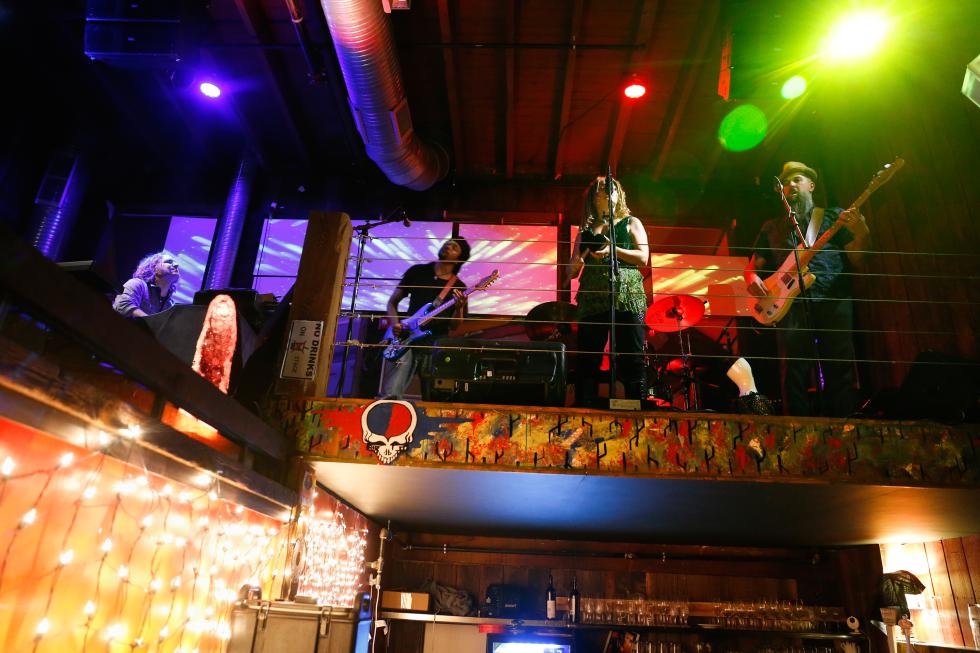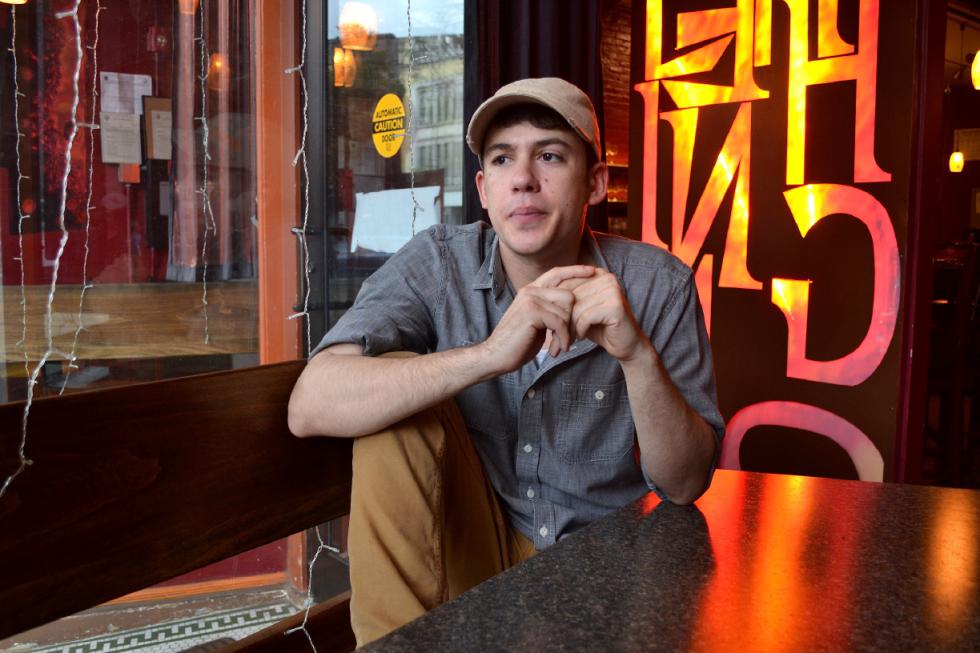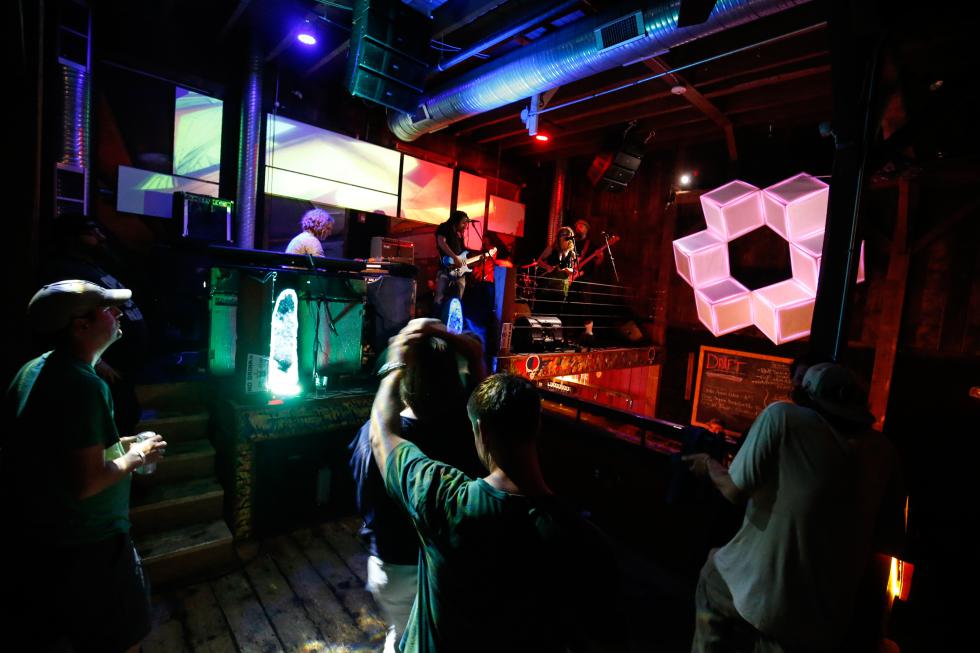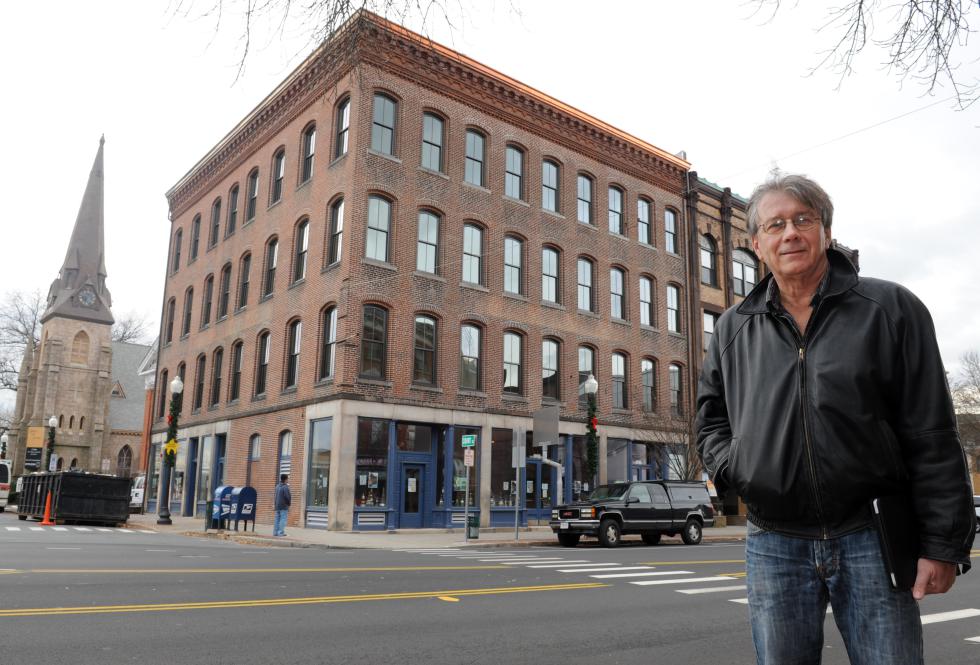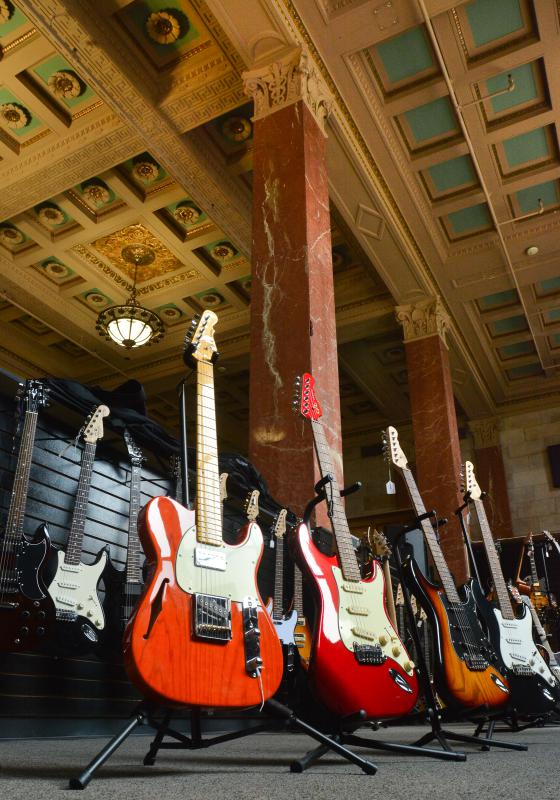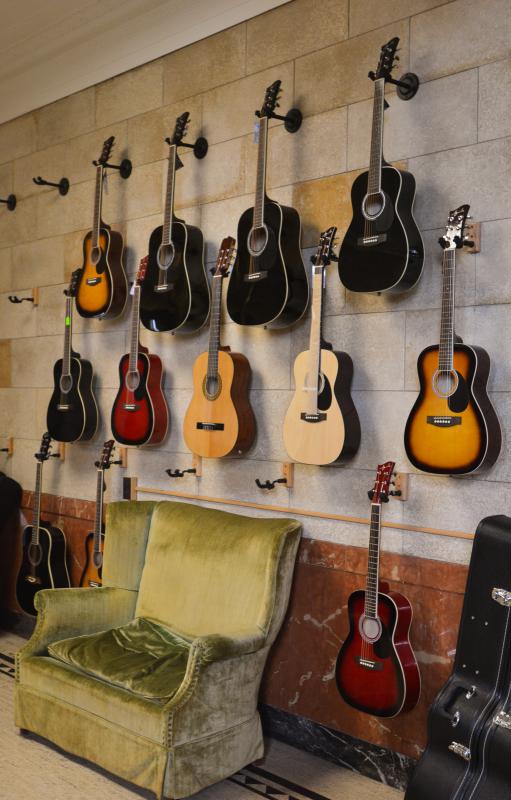How do a city’s business owners create a nightlife that is not only lively, but built to last? The short answer: by dreaming big.
Running an entertainment venue takes daily stamina and quick thinking, of course. But it also requires a deeper, grander feeling to fuel that hard work. Call it a dash of reckless optimism.
Opportunities abound, but so do economic and social challenges unique to each community. In Northampton, nightlife thrives, and competing businesses must find creative ways to stand out. In Holyoke and Greenfield — two cities often marked by entrepreneurs as the potential “next Northampton” — the challenge is even more stark: to attract audiences unused to late nights out, and to convince them to keep coming back.
We took a look at the future of those three downtowns — and three entrepreneurs who have set their sights on fostering a more robust night scene.
—
Joe Dias strolls through a bustling night in Holyoke. The rock concert he attended has just let out, and his next stop is a late-night jazz show at Gateway City Arts. On his way down the hill he passes a burger joint, a steak and seafood place, and a busy Italian bistro. Before reaching the canal river walk, he pauses at the edge of Heritage Park. He takes a deep breath and admires the scene as crowds pass by under the glow of streetlights.
For now, this is a Holyoke that exists only in Dias’s mind. But he’s taking steps to help create it. In October, he bought the historic Hadley Falls Trust Company building on Maple Street, and his Paper City Music Shop now occupies its ornate, high-ceilinged lobby space. A live concert series, he says, is coming soon.
Dias believes that new businesses like his have the power to remake Holyoke as a dining and entertainment destination. In his words: “It’s possible, and it’s happening now.”
To hear many locals tell it, Holyoke is a city best described in the future tense. In response to a recent rise in canal-side real estate development, Mayor Alex Morse said in a June 26 statement that the city has “created an ecosystem where people are investing again.”
Dias is one of those people. The Ludlow native — who also runs the Holyoke-based home contracting company CARE Improvement — says that he is pleased with the clientele that
Paper City Music Shop currently attracts with its music lessons as well as instrument sales and repairs.
But Dias is still wrapping his head around the costs and logistics of offering live music. The venue announced a summer concert series on Facebook, then withdrew the plan after city officials asked Dias to, as he put it, “jump through some hoops” to meet building codes that would classify the music shop as a restaurant and nightclub rather than a retail space.
Ironing that out will take a few months. Eventually, though, Dias envisions his shop as a versatile venue. On some nights: seated candle-lit dinners and jazz revues. On others: loud and rowdy rock and metal concerts.
Dias is investing in Holyoke right now because real estate is relatively inexpensive. At the same time, he says, he feels centrally located — downtown is mere minutes from interstates 91 and 391. And exciting, accessible music events will help Holyoke change for the better, he says, because “concert lovers don’t care where the venue is. When they want to check out a hot spot, and they know there’s good parking, they will come, regardless of where you’re at. That’s the segment of the population that will show up for us.”
The moment feels right, Dias adds. Aside from one noise complaint related to a band rehearsal, he says he has felt welcomed by neighboring residents and business owners, and he is excited by other downtown development projects like the CanalWalk promenade and the Open Square mixed-use space off Lyman Street.
“Now the city just needs to harness all this and support this,” he says. “There is every opportunity for the city of Holyoke to look like downtown Northampton on the weekends.”
—
This aspiration to be the “next Northampton” is hardly new. But no city is perfect — what kinds of challenges arise for that city’s already-established hot spots?
Aaron Kater, the owner and general manager of Hinge on Main Street, says Northampton’s competitive market for nightlife can feel like a double-edged sword. “If you come here as a new business, it happens that other venues may think you’ll put a damper on what they have going on,” he says. “But honestly, if there were two other places like Hinge that opened up in town and brought in music on a regular basis, I’d be happy about it.”
The upside, he says, would be an increase in customers overall, which feeds the arts and music scene as a whole.
Kater agreed with Dias’ assertion that music is the best way to unite and attract audiences. He says that a typical crowd at his bar and concert venue on a Friday or Saturday night is about 50 percent locals. “The rest come from central Mass., New York, Connecticut, and Vermont. If you bring in acts that people really want to see, they’ll come from everywhere.”
Hinge opened in 2012, and Kater arrived in 2014. During his first year, he says, he has used the nightclub Nectar’s in Burlington as a model for the future of Hinge. In addition to one-off shows, the calendar now includes regularly scheduled events like jazz on Sundays and Grateful Dead nights on Tuesdays. This past week, Kater kicked off a salon-style event called The Big Breakdown, which invites artists and musicians to stop by, meet each other, and try out some impromptu collaborations onstage.
“Northampton is a late town,” Kater says. Even if a weekend concert starts at 10 p.m., he says he often can’t gauge the real turnout until 11:30 or later. But eventually, they get there. A recent night of Grateful Dead covers, he says, drew 130 people ranging in age from their teens to their 80s. Not bad for a Tuesday night.
Kater is focused on providing good food, comfort, and community. “People were mad that I cut the DJ nights last year,” he says. “Before I took over, Hinge was a Top-40 DJ dance spot. There used to be four cop cars parked outside on Friday and Saturday nights, because a handful of people would always try to start fights. Now, that never happens.”
Neither do noise complaints, Kater adds, thanks to soundproofing installed this past year. Running a successful night spot isn’t all smooth sailing, he says — rent is high throughout downtown Northampton, and the city’s limit on liquor licenses currently precludes the sale of alcohol beyond wine and beer at Hinge — but business is stable, and more downtown activity overall, he says, feels like more shared success.
When asked to imagine the city’s nightlife in 10 years, Kater grins. His pie-in-the-sky dream, he says, is to close down a large portion of Main Street to cars on certain nights, opening it all up to pedestrians. “Picture it,” he says. “One long strip. An entertainment district. All the doors propped open, with live music inside, and everyone just hopping from place to place. Businesses could collaborate mre, maybe by selling passes to shows.”
This would require an extra dose of creativity from local businesses — and some forbearance from the city. But it woulod be worth the sweat, Kater says. “Think of Jackson Street in New Orleans, with all those jazz and blues and funk clubs. I think within a year, this would become an iconic spot.”
—
Hinge and other Main Street businesses obviously benefit from a large established population of shoppers, walkers, and diners. Up in Greenfield, by contrast, Edward Wierzbowski knew that he faced an uphill climb in his efforts to attract customers to his Arts Block performance venue at the corner of Main Street and Court Square.
“Nothing in my life has been as hard as the last six years, trying to pull this off,” he says. “It’s taken a huge amount of money and work.”
That’s in large part because the Arts Block and the Pushkin Gallery across the street — which he purchased in 2007 and 2008, respectively — are historic buildings, into which Wierzbowski has put $5 million in renovations. Greenfield’s architecture, he says, is even nicer than Northampton’s, and “I saw so many nice buildings here being torn down that I just couldn’t help myself. I had to do it.”
Last September, facing cash flow problems and the threat of foreclosure, Wierzbowski filed for Chapter 11 bankruptcy on both properties. In May, local periodontist and arts patron Steven Goldsher bought the buildings. Programming at Arts Block continues, and Wierzbowski now acts as artistic director. In the coming months, he says, “we’re just going to get bigger and bigger.”
That could happen, provided local arts lovers and Greenfield residents can sustain it. And getting them out onto Main Street at night on foot will require a serious culture shift. This is a town, Wierzbowski says, that goes to bed early.
Economics also determine levels of free time and disposable income. Greenfield’s estimated median household income in 2012 was about $42,000. That’s higher than in Holyoke, where the median household income in 2012 was about $34,000, but still $11,000 lower than in Northampton, and more than $20,000 below the state average, according to the U.S. Census.
The Arts Block currently attracts a few hundred people each week to regularly-scheduled events like comedy, jazz, and Cuban music nights. But Wierzbowski says he failed on some other fronts. When he opened a high-end restaurant in the building in August of 2010, for example, a strong customer base failed to materialize. Now the Arts Block allows visitors to carry in their own food.
“You can’t put a mansion in a slum,” he says. “Honestly, that’s what it felt like for a while. I started with 15 employees. Now, it’s mostly just me. I went for broke — and I found it.”
The most pressing problem in Greenfield, Wierzbowski says, is a lackluster main street: struggling businesses, commercial vacancies, and a serious dearth of foot traffic. “You come to town after 9 p.m., and even the movie theatre is sparsely populated,” he says. “People attend the earlier shows. But there’s something in the water that makes Greenfield residents go to sleep around 8. The Arts Block is the only place in Greenfield you’ll find more than 100 people at a time after dinner on a Friday or Saturday.”
Right now, Arts Block hosts two or three events a week. By September, Wierzbowski plans to produce between five and seven events a week, most of them music.
Still, one venue can only do so much. Wierzbowski says he likes to tell people to count the numbers of cars on Main Street, then to count the number of people walking around. “It’s 50 to one,” he says. “We have a lot of people driving through. They just don’t stop. They’re not going to want to put money in the meter if they think all they can get on Main Street is a cup of coffee.”
Time will tell whether Wierzbowski’s vision of a more vibrant downtown pans out. In the meantime, he is committed to help keep Arts Block open.
What about that old line about Greenfield — that it could be the next Northampton? “I don’t see that happening, exactly,” he says. “But if I didn’t think that was a good goal to reach for, I wouldn’t be doing this.”•
Contact Hunter Styles at hstyles@valleyadvocate.com.

